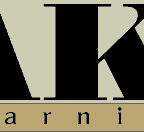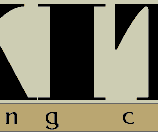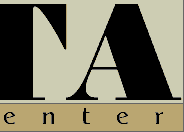 Save this page (135 kb)
Save this page (135 kb)
MY THOUGHTS ON THE AKITA DOG
Aiken Journal 184: 70-73 (February) 1975
as translated by Tatsuo Kimura
GUIDELINES TO THE ENJOYMENT OF YOUR AKITA DOG:
A DISCUSSION OF THE AKITA DOG STANDARD (CONTINUED)
TEETH
"The teeth are powerful with proper bite." Included In the foregoing stipulation is the correct number.of teeth which is 42 altogether. There are 2 upper and 2 lower canine teeth, a total of 4 teeth; 6 upper and 6 lower incisors; 8 upper and 8 lower premolars; 4 upper molars and ; 6 lower molars. The dog not only use his teeth for chewing or food, but also as the only effective weapon for attacking and defensive purposes.
The proper scissors bite is desired, but one also sees the overshot and undershot varieties, which are not rare. Missing or irregular teeth are regarded as minor faults. I would also like to add that the quality of the teeth, not mentioned in the Standard, is also very important. Teeth with a polished appearance are desirable.
CHEST AND ABDOMEN
"The chest is deep. The rib cage is full. The front chest is well developed. The abdomen is moderately tucked up." The chest depth probably refers to the side view, while the well developed front chest refers to the width of the chest as viewed from the front. Since the chest contains a portion of the body's vital organs, the shape is of much importance for the proper functioning of these organs. Although the Standard specifies that the ideal ratio between the height and chest depth as being 2:1 respectively, and that the chest extend to the level of the elbow, many of the recent Akita dogs seem to lack the adequate chest depth and width. One is not sure whether this is related to lack of adequate training exercises or difference in how the dogs are used.
"The rib cage must be powerful and full," and ideally be egg shaped in crosssection. However, if it is round from a cross-sectional view, the front chest may be too wide. This may effect the attachment of the front limbs and result in a clumsy gait. The opposite extreme of this is narrow ribs with inadequate spread that could result in a flat shape with narrow elbows, and a dog with an appearance lacking endurance. Thus the standard calls for a robust well-developed chest.
"The abdomen is moderately tucked up." This refers to the belly's tuck-up in relation to the chest when seen from the side. No matter how well the belly area may be tucked up, a shallow chest will not make this evident and will give the impression of a dog with a very thin body.The Akita dog's overall appearance of a sturdy and impressive air is influenced to a great extent by the chest development and tuck up of the abdomen.
BACK AND HIPS
"The backline is straight and the hips are powerful." The back and hips are very important for transmitting the driving force of the hind legs to the front legs. A convex (roach) or concave (sway) back affects the movement of the dog so that agility is lost. A roach back inevitably effects the angle of the neck and the tail coil, resulting in a poor posture. A sway back gives the appearance of a listless animal lacking proper exercise and training.
"The hips are powerful"refers to the powerful muscles that attach the pelvic bone to the adjacent bones. A weak hip causes instability of the back, resulting in weak hind legs with poor stance.
Some of these faults may be hereditary, but others may be due to
FORELEGS
"The forelegs have proper angulation with the shoulders and are well developed. The elbow joints are strong."
The forelegs must support the large head, thick neck and powerful chest. Furthermore, they aid in the vital function of agile movement. The parts of the frame from top to bottom consists of the shoulder blade (scapula), the humerus radius and ulna of the forearm, the carpus and the digits, each joined in succession to each other. The correct joint angles of these bones are very important in that the quality of the frame is largely determined by them. The outward appearance of the forelegs is dependent on the humerus, radius, ulna, pasterns and the paws. A shallow, angle between the scapula and the humerus results in "maeyori-kata" where there is frontward deviation of the shoulder blade. A faulty joint at the humerus and forearm bones results in a weak elbow joint.
"The forelegs are straight." This refers to the dog's forelegs as seen from the front. They must not be curved or have the toes pointed outward. The forelegs should be straight and muscular through proper disciplinary training. The pastern bears the impact of the body weight and must be very resilient as well as having the
proper angle.
"The paws are round, large, thick and have firm grips." They should be round, large, thick with strong grips with much resilience. Splayed or rabbit feet are not desirable, especially from the standpoint of a show dog.
HIND LEGS
"The hind legs are well-developed, powerful and sturdy." The hind legs are the propulsive force in the movement of the dog. The anatomical parts of the hind leg are the hip bone, which is attached to the femur, which is attached to the tibia, and then the fibula and the tarses. Naturally, these must also have proper angulations at the joints as in the forelegs. Externally, one would like to see a strong muscular build of these structures as a result of disciplinary training. Although the Akita dogs of today have markedly improve along this line, many Akitas of the past had improper angulation or weak joints in the hindlegs. Some of the faults were cowhocks, open hocks and weak hind legs moving close to each other. Also, a side view revealing a curved lower leg with excessive angulation detracts from the appearance of sturdiness.
"The hocks have the proper angulation and springiness." The hocks play an important part in producing the propulsive power of the hind legs, and must be structurally, sound to produce a strong and quick driving force. Excessive angulation, shallow angulation and "reverse hock" are not normal from the standpoint of mechanics. The hindlegs must also appear as large and powerful as the forelegs.
The hindlegs are important parts of the anatomy and contribute greatly to the overall appearance of the dog. The hind legs should be parallel with the forelegs when viewed from the rear. The side view should reveal a powerful stance, which adds to the overall appeal of the dog.
TAIL
"The tail is thick and tightly curled. The tip of the tail almost touches the hock." It is said that the tail of the dog functions as a rudder.It also expresses the character and beauty of the dog aesthetically. As stated in the Standard, the tail must be curled in a majestic manner. Unless the tail nearly reaches the hock, an adequate curl will not be formed, while a longer tail often leads to a loose curl which will detract from the stylish appearance.
"The types of curls are the left curl, curl directly over the back, and the double curl." The tail curls should be as specified in the Standard. However, there are variations even in the same type of curl. There are curls that are too tight, making the tail appear smaller. There is also the curled tail that drops to the side of the hip. Then there is the "droopy tail" with a very loose curl. In general, the ideal curl should be high and oval shaped. In essence, the tail should be in balance with the angle of the neck and in harmony with the rest of the body to reveal its beauty and powerful appearance. The tail curl is considered as one of the symbols of the Akita dog along with its standing ears, so that an uncurled tail is considered a point of disqualification.
COAT
"The outer coat is coarse while the undercoat is fluffy." The coat of the Akita is considered as being unique with three grades of coat. The long heavy straight coat is called the bristle coat, the coat covering the entire body is called the regular or outer coat. Beneath the outer coat is the soft luxuriant undercoat, also called
the fluffy coat. A coat of good quality will reveal all three layers. The luxuriant growth of the undercoat causes the other layers to stand out, especially with the bristle coat. The coat at the withers and rump are slightly longer than in other areas. The tail coat is notably much longer and must be standing adequately. In contrast, if the undercoat is inadequate, the outer coats will not be as erect.
This condition is seen temporarily with the change of coat in dogs with a coat of good quality. Lack of either outer or undercoat can result in a coat of a uniform layer. Then there is another coat of poor quality called the soft downy hair. Extremely long or extremely short coats are reasons for disqualification.
The characteristic coat of the Akita is probably due to their origin in the northern regions where the winters are very severe. A simple way to evaluate an Akita dog's coat is to look for the clumping of the coat seen immediately after a dog shakes off the rain from his drenched coat.
COAT COLORS
There are some obvious differences in the Standards on the coat color between the three Akita dog organizations. Akiho includes white, black, red, goma (sesame), brindle (tiger striped) and pinto. Nippo includes goma (goma, white goma, red goma, black goma), red (red, light red, deep red), black, brindle, red brindle, black brindle and white. Pinto is not included. Akikyo includes red, white, goma, brindle and black, as well as variations on the foregoing colors with differences in the way of ranking.
The foregoing colors of the Akita are not as simple to visualize as written in the Standard, and in reality it becomes very difficult to evaluate the various colors. Attempts to explain or interpret are further complicated by different views held by the viewers. However, the coat color holds much sway in placing the Akita dog at the shows. A dog lacking a vivid coat color may not be placed as high in the show ring, no matter how great the facial features, beautifully balanced the body, or excellent the coat quality.
With the exception of the white coat, the Akita dog's coat colorundergoes changes with growth and development. This also adds to the difficulty of judging the true coat color. In the final analysis, one should become capable of judging what he considers to be the appropriate color for each stage of growth. Needless to say, one should consider the color hue admired by the Japanese in the Akita dog that inhabited the Tohoku region from ancient times. That is, color hues that blend with the elegantly pure Japanese paintings, pristine and refined Japanese antique art objects and the simple but sturdy and strong Japanese architecture should be considered otherwise. I believe that one could not possibly come to appreciate the feeling for that simplicity without adornment called "shibusa" or "soboku" so often expressed by the Japanese.
WHITE. Pure white with some tinge of blue is considered as being the most ideal. However, some consideration is also given to those with a faint tinge of red or yellow. Although a pink nose is permitted on the white dog, the dark pigmentation the borders of the eyes and lips should be darker than the pigment of the nose. The quality of the white coat which gives rise to a feeling of purity and mysticism may be brought out only by having the various parts of the body pigment in a darker hue.
BLACK. Akitas entered as black in the dog shows, on closer inspection turn out to be either black goma or black brindle without stripes. However, it is a color that is accepted by all of the Akita dog organizations. Personally, I have yet to see a truly black Akita. A black Akita dog with a coat color similar to those ancient Japanese paintings in black and white would probably be readily noticed and highly regarded
RED. In general, the term red includes red, crimson, scarlet, red lead, orange, etc. depending on the shade. In the Akita dog, teacolored varieties are also considered red, including fox red, light red, yellow red, etc. There are many more names denoting red which are difficult to express in written terms. The color tone also varies with the color of the soft undercoat. A white undercoat makes a coat look lighter, while a black undercoat makes a coat look darker. Furthermore. various parts of a dog's body have different shades of light and dark which further adds to the varieties. As to the color tones which are preferable, my opinion is that one should exclude the faded and the dark heavy tones, as well as those that remind one of red rust. Any color tone that blends with colors of Japanese paintings is worthy of consideration.
More recently, fewer Akitas with black ears and black masks are seen, as well as red Akitas with streaks of black and varying shades of red. These types were very common until about ten years ago, while the Akita dogs with white masks or masks with white extending from the muzzle to above the eyes which are commonly seen today, were rare in those days. Although the reasons for the decline of the black mask are not clear, my conjecture is that increased fondness for the "hoho-boke"(faded cheek, color) which, is more representative of the smaller wild animals inhabiting northern Japan may be responsible for this-trend.
GOMA. Akiho has classified it as one color, but Nippo has divided it into goma, white-goma, red goma, and black goma. White goma probably refers to the silver goma of the past. The red goma coat usually consists mostly of red with some black. The black goma coat contains more black than goma, resulting in a darker coat. There are very few Akitas with the goma coat remaining today. Until the mid 1950's, over half of the Akita dog show entries were either of red goma or black goma coats. I believe that the decline was due to the change of the goma color. Although the puppy coat color was to one's liking, the coat tended to take on a dull appearance with maturity, so that in some cases the color was associated with another breed of dog which was quite unlike an Akita dog.
However, the goma and black goma coats are included in the Standard, and the dogs with the goma coat have not disappeared completely. It is hoped that the Akita dog with the elegant black goma coat will be preserved.
BRINDLE (TIGER STRIPES). As in the red coat, there are also many shades of brindle. They may be classified into the brindle, black brindle, red brindle and the pepper-and-salt brindle coats. The most desirable brindle colors for the Akita are probably the black or the salt-and-pepper brindles. The black brindles tend to lack the white on the muzzle, at the tips of the limbs and the tail, resulting in a heavier than desirable black color tone. The pepper-and-salt brindle has a lighter shade of black, with the muzzle and limbs having a hue as if some frost had descended upon the earth. The color quality of the red brindled coat depends upon the amount of red present, whereby a strong red color is undesirable.
Several years ago, brindles with striped patterns on the face were fairly common. This was often a point of criticism. But since there are stripes on the trunk and limbs, it seems natural that some of these would appear on the face. It would be better if these facial stripes were not so unsightly.
In any event, the distinctive feature of the brindle coat is that it expresses "soboku", a pristine simplicity and dignity in the Akita dog. This is especially true in a brindle with an outstanding coat.
PINTO (BUCHI) There are wide variations in this coat pattern. It includes those with only a thin white stripe around the neck as well as those with a pattern over the entire body. Then there are those with color limited to the head only. The pinto colors consist of red, goma, black and brindle with many variations in both color and pattern. However, pintos with harmonious color tones are indeed splendid and elegant dogs to behold. Akiho has awarded the Meiyosho to pinto dogs in the past, however, they are not valued very highly at the present time. Perhaps this may reflect the preference for Akita dogs with the quality of simple dignity without gaudiness.
| (Published in March/April 1993 Akita World magazine) |
Top ↑ |




